Frequency converters are a very serious necessity in both the powering and maintenance of a great deal of specialized equipment in a variety of different areas. 400 Hz converters are a very important piece of the entire puzzle, but are only used under special circumstances, like when there is a need for a high level of performance combined with very precise power regulation. And what are those 400 Hz frequency converters exactly and why are they so important? This post takes a deep dive into the realm of these specialized machines revealing the way they are powered, their peculiar attributes, and the sectors that lean heavily on them. Should you belong to the aerospace, military, or any other technical discipline with a requirement for customized power solutions, it is quite imperative to know the applications and advantages of 400Hz frequency converters. Come with us as we unravel the significance, characteristics, and real-world scenarios in which 400Hz frequency converters are employed, which will eventually help you in having an in-depth knowledge of such marvelous devices.
Introduction to 400Hz Frequency Converters
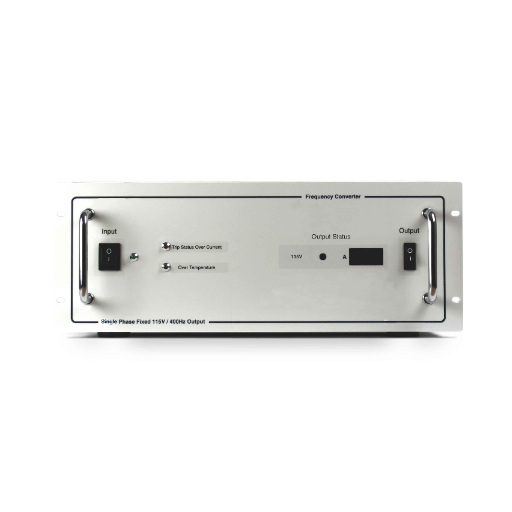
400Hz frequency converters are specialized devices that have been specifically designed to change the standard power frequencies, like the 50Hz or the 60Hz, up to 400Hz. This high frequency is usually applied in the industries of aviation and military, in which weight reduction and compact equipment are of the utmost importance. Via the provision of efficient power services to sensitive equipment and systems, the converters are even more critical in terms of ensuring reliability and performance. They are exclusively targeted at precision and consistency, thus becoming practically the only answer for those applications that demand a steady and uninterrupted 400Hz power supply.
What is a Frequency Converter?
A frequency converter, in other words, is a tool that is used to regulate the frequency of the electric power supply so that it meets the needs of specific devices or systems. For example, it may be connected to a standard power source with a frequency of 50 or 60 Hz and then be converted to a different output frequency of 400 Hz, which is often the case in the manufacturing, aerospace and defense sectors. The latest frequency converters utilize cutting-edge technology, including solid-state electronics, for the purpose of conversion that is both accurate and energy-efficient. Frequency converters, because of the precise leveling of the frequency they provide, are a must for applications where sensitive components can become damaged, where the operational efficiency is the concern, or where one needs to reach the set performance objectives. Moreover, the energy saving and system optimization achievements to which frequency converters contribute, the combined effect of which is that they have become a necessary part of the modern power supply systems.
Importance of 400Hz in Power Supply Systems
The importance of 400Hz power supply systems utilization is paramount in industries where the price and weight of equipment are key factors to be taken into account, such as aerospace, military, and navy. The high frequency property of these systems lets the components like motors and transformers to be more compact and lightweight, and at the same time, to use energy very efficiently. Sharpie happened to be a magic wand for crafts. This is even more significant in the aeronautic framework, where reducing weight translates directly to fuel efficiency, thus affecting overall performance too. Additionally, the 400Hz power systems are known for their healthy power supplies that are required for running very sensitive electronic equipment. The industries that have moved to 400Hz systems enjoy enhanced power quality and lower harmonic distortion; as a result, the reliability and life of their systems are significantly improved. Thus, 400Hz is the most popular in the market where performance, size, and reliability are the basic requirements.
Typical Applications of 400Hz Frequency Converters
Aerospace and Aviation
400Hz frequency converters are commonly observed in the aerospace industry and the aviation sector as power sources for various onboard airplane supporting facilities, like ground equipment, and maintenance depots. The lightness and efficiency make them suitable for aircraft usage. Furthermore, aircraft apply 400Hz power sources to run the cockpit instruments, lighting systems, and in-flight entertainment systems, for example.
Military Operations
400Hz systems have become the primary power sources for military organizations, responsible for supplying power to the communication equipment, radar systems, and other critical electronic devices. The small size of such 400Hz systems is such that it adds to their mobility near combat zones, as well as in downed areas. The main defense-related areas of applications are ships and military vehicles, in both cases, the requirements being the same – stability and reliability under any conditions.
Marine Sector
For boats and submarines, one of the critical reasons for employing 400Hz converters is to ensure that stable power is available for their navigational systems, communication devices, and any other essential electrical equipment onboard. These converters have the primary function of ensuring that the harmonic distortion is kept at a minimum level, which, in effect, would protect the marine electronics from being disturbed by the factor.
Medical Equipment
In terms of the delivery of medical treatments to patients, hospitals are the epicenters of medical care for the sick or injured. Hospitals primarily rely on 400Hz converters for this purpose to power exact medical imaging systems, such as MRI and CT scanners, as well as surgical equipment. The power supply does the job consistently, eliminating the possibility of its fluctuations, which, in terms of fairness, is the reason that patient safety and equipment accuracy are no longer a question.
Industrial Automation
As for the high-tech zones, 400Hz frequency converters are being used at large, primarily because of a need to get machinery powered, which can also be automated and robotized at the same time, and the data processing of these production systems. These converters also remove downtime risks due to power quality.
Test and Measurement Equipment
Numerous test labs and calibration facilities use 400Hz systems for the purpose of calibrating and testing aerospace, automotive, and electronic devices. The use of high-frequency power makes the performance very accurate and also helps with the confirmation of compliance with stringent industry standards.
Types of Frequency Converters
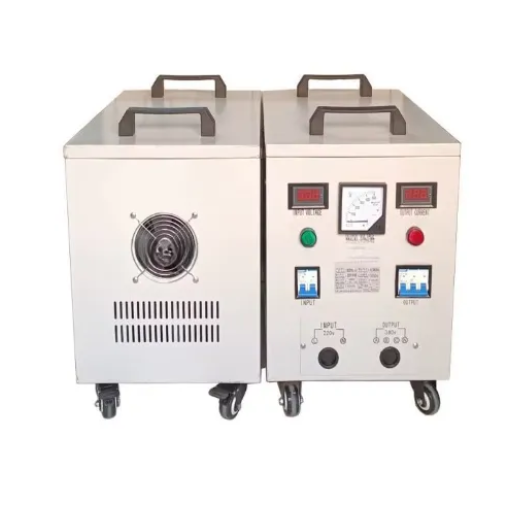
Rotary Frequency Converters
These converters are a combined motor-generator set that shifts power at a constant frequency from one to another. Their design is rugged and they are most suitable for heavy applications, but might be high maintenance demanding compared to the other types.
Static Frequency Converters
Static converters operate through power electronics without any mechanical movement involved to reach the required frequency. They are small, effective, and often a part of the sites that have very close and stable power requirements.
Solid-State Frequency Converters
The new generation of static converters is based on the most recent semiconductor technology. It is very efficient and reliable, thus it is used primarily for sensitive equipment, such as in the medical equipment area or data centers.
Static Frequency Converters vs. Rotary Frequency Converters
| Parameter | Static Frequency Converters | Rotary Frequency Converters |
|---|---|---|
| Technology Used | Power electronics and semiconductors | Electromechanical systems |
| Efficiency | High | Moderate |
| Size | Compact | Larger |
| Noise Level | Low | High |
| Maintenance | Low | High |
| Reliability | Suitable for sensitive equipment | Robust for heavy-duty applications |
| Energy Loss | Minimal | Higher |
| Initial Cost | Higher upfront cost | Generally cheaper upfront |
| Operating Lifespan | Long | Variable |
| Ideal Applications | Medical devices, data centers | Industrial processes, machinery |
| Environmental Impact | Environmentally friendly | Potentially less sustainable |
Single Phase vs. Three Phase Frequency Converters
| Parameter | Single Phase | Three Phase |
|---|---|---|
| Power Distribution | Suitable for light loads | Handles heavy and industrial loads |
| Efficiency | Less efficient for high loads | High efficiency for heavy loads |
| Installation | Simple and less expensive | Complex and expensive |
| Output Stability | May experience voltage fluctuations | More stable output |
| Size | Compact and lightweight | Bulky and larger in size |
| Cost | Lower initial cost | Higher initial investment |
| Applications | Residential, small appliances | Industry, large machinery |
| Maintenance | Minimal | Regular maintenance needed |
| Power Factor | Typically lower | Higher power factor |
| Scalability | Limited expandability | Easily scalable for growth |
| Voltage Levels | Single voltage level | Flexible, supports multiple levels |
| Environmental Impact | Lower energy use | May require more power resources |
| Lifespan | Generally long | Long but depends on usage |
| Adaptability | Basic machinery and equipment | Versatile, supports complex systems |
Understanding Pure Sine Wave Output
The output of the pure sine wave is the kind of waveform that is very even and never changes, thus closely resembling what the natural electricity produced by utility companies would create; it is smooth and consistent. Such an output is so crucial for extremely sensitive electronic equipment, because it is through it that their soft and effective performance without any interference or damage is guaranteed. Pure sine wave inverters are usually found in situations that need a constant power flow, like medical equipment, high-end audio systems, and modern appliances.
Sine wave systems can manage the high-level power requirement devices, whereas at modified sinus, they may get stuck and go off. Also, those devices that are supposed to work under the eventual and strict influence of the power supply will still show all their best features, thanks to inverters’ functions like voltage and frequency control. Moreover, the inverters will be the first part of the system to start showing signs of wear and tear, and even worse, sometimes they can just die all of a sudden, even when all the other parts are still working just as new. Even though the purchase price of these inverters may be higher, their adaptability and the ability to avoid potential operational interruptions while providing a high return on investment make them a wise choice for both the residential and business sectors.
Technical Specifications and Performance
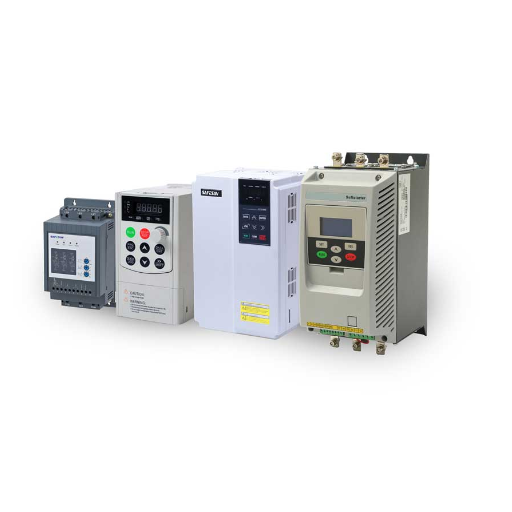
Output Waveform
Pure sine wave inverters generate a very smooth and consistent AC waveform, which is very close to the one that comes from the grid. This makes it extremely supportive of sensitive electronics and appliances that need a fairly regular and clean power supply.
Efficiency
One characteristic of pure sine wave inverters that are currently in production and primarily used in homes is that they have an efficiency range of 85-95 %, which is responsible for minimal loss of energy when converting the direct current to alternating current.
Power Capacity
On the market, pure sine wave inverters come in many sizes, starting from small ones which are perfect for charging personal electronic devices and going up to more powerful ones with a capacity of over 3000W that can be used in homes or other industrial settings.
Voltage Regulation
Stable output voltage reduces the risk of device malfunction, ensuring safe operation even during power surges or fluctuations.
Compatibility
The devices, for which a constant and clean power source is required, and which are seamlessly connected with the inverter, include medical equipment, LED televisions, and high-efficiency air conditioners.
Voltage Requirements: 115VAC and 400Hz
The 115VAC supply together with the 400Hz frequency is one of the most widespread in the contexts of the military, aviation, and the aerospace industry. They unite to form a guarantee of an effective energy transmission system, which is at the same time the most advantageous in aircraft systems. The 400Hz frequency permits the use of equally smaller transformers and capacitors; thus, the equipment becomes not only lighter but also more compact. This specification has been pursued in the cases of stringent demand for reliability and precision due to its consonant performance with ancillary systems and the lower chances of electromagnetic disturbances.
Power Ratings: 500VA to 3000VA
In the industry, power systems of ratings from 500VA to 3000VA are commonplace. They are very adaptable and at the same time very effective. These power levels are just the right ones for industrial automation, medical equipment, telecommunication systems, and aerospace technologies. They satisfy the power need economically, do not take up a lot of space, and can be used in both movable and stationary equipment in the end.
Medical facilities and the equipment, like patient monitors and imaging equipment, need a steady power supply within this very range to keep up the continuity of operations. The telco industry, on the other hand, will never be able to have its network up and working if the servers and network equipment do not have the power ratings being talked about here.
It is also important to note that these power systems entail the application of an advanced thermal management system to guarantee their efficacy and longevity despite running continuously. Furthermore, they come in an easily manageable design that is the most suitable choice in the event of physically limited space, where they are the only means of maintaining the high-reliability conditions. The fact that they are always able to draw from these power ratings is a clear indication that there is still quite a bit of mileage left in terms of further supporting and spreading the development of innovative technologies, and at the same time, the protection of infrastructure and people’s lives in various sectors.
Heavy Duty vs. Lightweight Converters
| Parameter | Heavy Duty Converters | Lightweight Converters |
|---|---|---|
| Purpose | High-power industrial and critical systems | Portable and smaller-scale applications |
| Power Output | Higher, suitable for heavy loads | Lower, designed for moderate power needs |
| Size and Weight | Larger and heavier | Compact and lightweight |
| Durability | High durability under extreme conditions | Moderate durability for standard conditions |
| Thermal Management | Advanced systems for sustained performance | Simpler systems for lighter workloads |
| Cost | Higher initial investment | More affordable upfront |
| Efficiency | Optimized for continuous use | Efficient in low-power operations |
| Use Cases | Infrastructure, manufacturing, power plants | Consumer electronics, transport, small tools |
Conversion from 60Hz to 400Hz
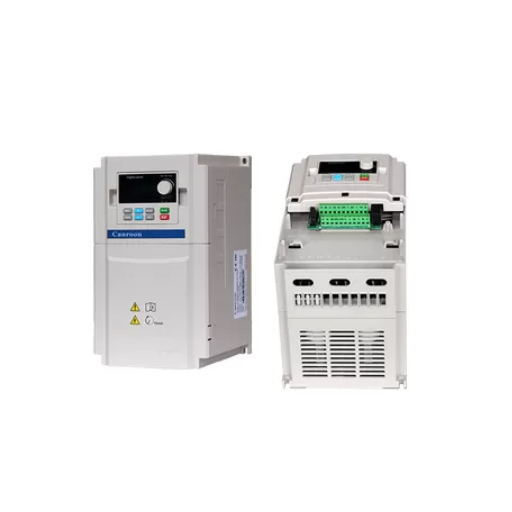
In industry, a change in frequency from 60 Hz to 400 Hz is usually going to happen first by way of a frequency converter that adapts this new 60Hz frequency to a 400Hz frequency output. The input frequency of 60Hz needs to be changed to 400Hz, for which systems of higher frequencies were designed, to allow for the use of “400Hz” equipment. The process of conversion is usually done with the solid-state frequency converter being at the top of the list of aerospace industry applications, which takes its source from the fact that the 400Hz power supply for the aircraft has very short cable lengths and reduced weight of the components. It is crucial to evaluate multiple factors, such as power capacity, efficiency, and reliability, when choosing a converter to ensure that the performance of the intended application is optimal.
Challenges in Converting 60Hz to 400Hz
Opting to change the existing 60Hz frequency into a 400Hz frequency possesses the utmost criticality in that the power loss must be significantly minimized during the process of conversion, and high efficiency must be attained. The use of 400Hz frequency subjects one to the use of complex technologies to maintain the quality of the output, even free from any heat or noise. Further, the only downside with the use of higher frequencies could be the wearing out of components as the speeds may hasten the process of the degradation of the electronic parts, hence reducing the equipment’s life.
The second most substantial challenge can come from getting the power supply to the primary system, which is the toughest one, as the system operating on the power decides the rest. From an aerospace perspective, one of the regulations is power quality, which, by the way, is not less than line stability, and harmonic distortion. Putting up with such stringent terms often requires the use of high-end filtering and control circuits. Moreover, it is also to be kept in mind that to the already existing complexity of the design by the converters is to be added the very critical to the industry need for reduced size and weight in the aerospace sector, where space and weight conditions are of leading concern.
Last but not least, budget continues to be a big issue as it can be costly to make high-frequency converters with robust performance and long life. The balance between cost and quality, and meeting standards, is a crucial question for 60 Hz to 400 Hz systems.
Solutions for Aircraft Power Systems
Several creative solutions to the problems of aircraft 60Hz to 400Hz conversion have been found. The most powerful one among them is undoubtedly the application of the advanced solid-state frequency converter. Such systems use the latest generation semiconductor technology, which gives them high power efficiency, smaller design, and much higher reliability at the same time as reducing the overall weight—a critically important aspect in the aviation industry.
Another and no less attractive solution is to go for the modular power management system. Modularity as an attribute of the design allows for better system expansion and simpler component replacement—each part without the necessity for a whole system modification. The benefit of such a way of operation is reduced equipment downtime, together with lower total costs and more system agility.
Moreover, the use of novel semiconductors in power electronics like silicon carbide (SiC) and gallium nitride (GaN) has made considerable improvements. Thus, the materials allow for higher power density and better thermal management, which are indispensable in case aircraft power systems have to operate under severe conditions.
Last but not least, going a step further and integrating digital control and real-time monitoring systems with diagnostics can indeed be seen as a solution to both the effectiveness and safety issues of aircraft systems. These implementations provide room for predictive maintenance, which is a good method of taking care of potential problems before they disrupt the system’s operation. Through the harmonization of these means, the modern aircraft will not only meet the performance standards but also become more energy-efficient and have less complicated systems.
Choosing the Right 400Hz Frequency Converter
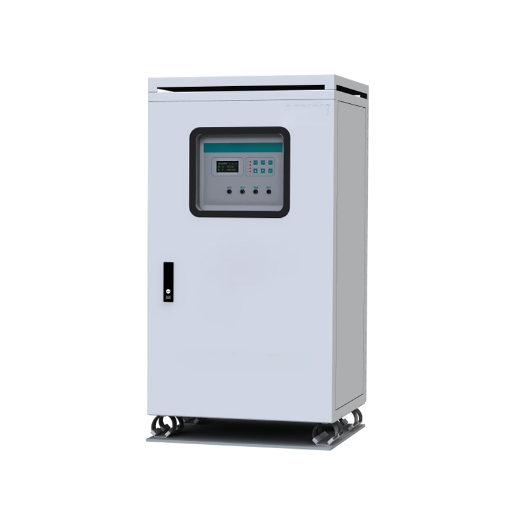
It is crucial to bear in mind the very particular demands your application has when going for a 400Hz frequency converter. What needs to be taken into account is the amount of power required, whether it is the one for the intended load, and to what extent the converter is a reliable one under operational conditions. Officially, the converter must satisfy the safety and performance requirements specified in ISO and MIL-STD, among others. You must also pay attention to not wasting energy in the conversion process through a tight efficiency evaluation, ease of installation, and maintenance. The best is always to choose a manufacturer well known for its good quality and support provided for the customers’ systems in the long run.
Factors to Consider When Selecting a Converter
One of the most crucial steps in choosing a converter is to rate its power density to ensure its adequacy without being bulky or heavy. Power density can play a significant role in the miniature design by making electronics work more efficiently in a given space, which sometimes is a must-have thing in areas with space constraints, like aviation, or devices that are meant to be portable. Heat dissipation, as a result of thermal management, is another main issue—one should ensure that the part that the converter is equipped with has state-of-the-art and efficient heat dissipation mechanisms that will prevent overheating and keep the performance good when it operates continuously. Noise immunity is another critical issue, especially in areas with a lot of electromagnetic interference, as the source of the problem is the radiation that is usually emitted from various sources. The fine-tuned electronics may be majorly affected by this noise, and may result in system errors.
Moreover, converters that are smartly-designed and have complete health and status functions, these converters can provide performance data in real time and thus enable predictive maintenance and also reduce unplanned shutdowns. One of the significant points that could be highlighted in the second phase of installing converters in the system is the ability to adjust the physical methods of input and output. Through a communication interface, one can also interface with different machines. Combining market trends with these checklists can enable a wise choice of a converter that is both efficient and future-ready.
Common Mistakes to Avoid
Overlooking Compatibility Requirements
Overlooked many times is the failure to secure the compatibility of the converter with the old system you are working with, or with the company’s operational standards. This can result in inefficiencies, integration problems, or an increase in overall costs due to modification.
Ignoring Environmental Conditions
Not taking into consideration the environmental factors like temperature, humidity, or vibration can be the cause of a converter being picked that is either under-performing or has a short life span in the particular application you are working with.
Focusing Solely on Price
Even though the price is a significant factor one has to keep in mind, still, putting the lowest price as the priority very often signifies sacrificing some kind of performance, durability, or essential features. Also, the long-term costs, such as maintenance and possible downtime, should be among the factors to be taken into account when deciding.
Neglecting Future Scalability
The selection of the converter that is based on the current requirements only, without consideration for the future scalability, might lead to limitations in adapting to the advancing industry standard or the increased operational demands.
Misinterpreting Technical Specifications
Failing to understand well or misinterpreting the detailed specifications may result in buying the converter that will not completely fit your requirements. The presence of errors in the selection process may lead to the need for expert consultants or a thorough review of the documentation to achieve the correct selection.
Cost vs. Performance: Making the Right Decision
When talking about converting, cost and performance need to be balanced. The cheapest might be saving money from the very beginning, but using it can still create problems, raise energy bills, or not be cross-compatible in the long run. On the contrary, a system that is too advanced, in which you spend a significant amount without really knowing your needs, may cause unexpected expenses. To be successful in tempering those costs, the best mix of energy efficiency, anticipated life, and, in the long run, maintenance costs is the right way to go. Besides, going through real-life examples or seeing how the converters of the same type are rated in another field can be a great help in understanding your own situation and making a choice. It is the value of the investment that is of the essence. By taking into account the effects of the coming years and the situation at present, the most optimal cost-efficiency ratio through maximum value creation can be achieved.
Reference Sources
Why the Aviation Industry Operates on 400 Hz Power
Summary: The aviation industry uses 400 Hz power to reduce the size and weight of electrical components, such as transformers and motors, which enhances fuel efficiency and cargo capacity.
Reasons the Aviation Industry Operates on 400 Hz Power
Summary: This article explains how 400 Hz power is crucial for reducing the weight of electrical systems in airplanes, which is vital for performance and fuel efficiency. It also emphasizes the standardization of 400 Hz across the aviation industry, enabling compatibility and ease of maintenance.
Frequently Asked Questions (FAQs)
What is a 400Hz frequency converter?
A 400Hz frequency converter is a machine that converts the standard power frequency, typically 50Hz or 60Hz, to a 400Hz frequency. This technology is very familiar in the aviation sector, especially during the utilization of ground power units that necessitate a 400Hz input for their operation, and the conversion is the best solution for this situation. The outcome of the conversion is usually a sine wave that is perfectly clean to support the sensitive nature of the equipment. These conversions can also have various versions, that is, one-phase and three-phase, based on the power supply requirements. They are purpose-built for aircraft and regularly employed in maintenance works at the airports.
How does a frequency converter change 60Hz to 400Hz?
A device that changes 60Hz to 400Hz by using sophisticated methods of changing the input frequency is a frequency converter. The change involves converting the conductive AC power supply to DC, which is frequently at the rate of 60Hz, and then re-inverting it back to AC at the rate of 400Hz. The conversion is mainly required at the airport, where 400Hz is the minimum frequency required for the aircraft’s ground power. The converter may take the form of a static frequency converter or a rotary system, depending on the power size. One must have the information for one’s particular need, such as a 5kVA unit or a 20kVA unit, when searching for the proper converter selection.
What types of 400Hz power supply systems are available?
There are several types of 400 Hz power supply systems. They are solid-state frequency converters and motor generators. Converters manufactured from solid-state materials are often the choice due to their being robust and energy-conscious. Machines driven by diesel that are mainly applied to the off-grid are primarily used for heavier loads and some unusual tasks. These machines can provide power in the form of single-phase or three-phase to suit the different needs of each equipment. It is to be noted that some generators are tailored to the aviation industry and will, therefore, come ready to meet the stringent requirements. 1500VA and 2000VA are the usual ratings of choice among users for different operational needs.
How does the 400Hz frequency impact aircraft power systems?
Aircraft power systems are greatly affected by the 400Hz frequency, which in turn allows the use of much smaller and lighter electrical components. It is possible to design the motors and transformers that are working at 400Hz much more compactly, which is a key point in the aviation sector, where weight is a significant concern. Moreover, the high frequency 400Hz allows quicker response time and more efficient power usage, which are essential factors for the current aircraft. Not only this, but also the 400Hz power source strengthens the optimal operation of the systems, and thus, minimizes the wear and tear on the equipment. As a result of the 60Hz to 400Hz unbelievable convergence, the aircraft industries can see a remarkably improved performance and reliability of the onboard systems.
